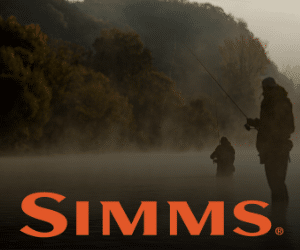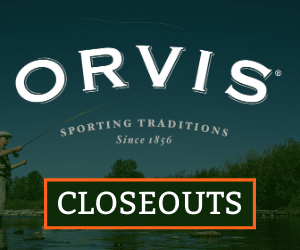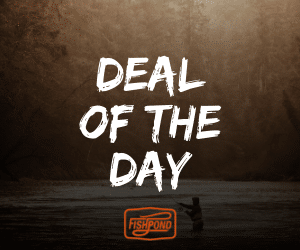There are not a lot of adventures that compare to the one’s where you are catching the trout hand over fist on the flies. It’s fun! But, to get out on the river and catch the most fish, you must understand what the diet of a trout looks like.
Trout can be the pickiest eaters alive at some points, but at others, it feels as though they are eating everything in sight. This is pretty standard when fly fishing for trout, you might find one fly that just hits home right away, or nothing is working at all.
Diet of a trout
Trout eat a lot of different meals. However, insects and flies are typically the most standard of the diets. This can vary on the season, but there is an abundance of aquatic insects or bugs that spend a lot of time on the river, making for an easy trout dinner. Trout will also eat a variety of crawfish, minnows, mice, grasshoppers, bugs or even cannibalize and eat their own species.
Seasonal Diet
Trout eat different foods as the seasons change. There is typically not a drastic change of diet from one season to the next, but there is some. The biggest difference is the winter months, when a lot of the food sources for trout leave the area.
Winter
The winter months provide the least amount of variety in a trout’s diet. There are no bugs on the water, resulting in trout looking for a new food source. This is typically minnows. If there are crawfish in the area, they will also be eaten up too.
What to use in the Winter
If you are winter fly fishing, I would recommend using streamers. Try to present your streamer in such a fashion that you look like an awesome minnow or crawfish waiting to be gobbled up. Don’t use dry flies as you will be wasting your time. The diet of a trout rarely consists of flies in the winter time.
My go to fly fishing winter flies are usually the Wooly Bugger or the Muddler Minnow. They are versatile flies and they both can look like minnows to the right fish.
Related: Ranking The Best Trout Dry Flies of All Time
Spring
The Spring provides an abundance of food for a trout’s diet. Bugs and insects are returning to the waters and the weather is warming up a bit. This is when the trout will start eating the flies that land on the water. It is fly hatch season in the Spring, so oodles and kaboodles of flies will congregate in the same area on the river. Trout will start moving to these areas, because that’s where the food source is. Spring marks the time when the trout’s diet starts to broaden again.
Best flies to catch trout in the Spring with
If I’m fishing for trout in the Spring, I will typically match the diet of the fish by bringing at least some Parachute Adams flies, Elk Hair Caddis flies and Pale Morning Dun flies. I also bring some more dry flies, but those are my three go-to’s in the Spring.
Summer
Trout in the summertime again, have an abundant diet. Trout will still eat insects, bugs, minnows crawfish. A lot of fly fishermen put away the dry flies after the hatch season is over and start using nymphs and streamers, but this is not a must. In fact, in my opinion, it’s a wasted opportunity to stop using dry flies in past the Spring season.
What flies to use in the Summer
In saying that however, I surely do not go to the river without streamers or nymphs. For me personally, a couple flies that work well are, Pheasant Tail Nymphs, Parachute Adams flies and an occasional Morrish Mouse.
*sidenote on the Morrish Mouse, it can be a sneaky little curve ball for the trout and when the other flies aren’t hitting, I throw this puppy on there and usually get a bit of success!
This is obviously going to depend on the location of where I’m fly fishing, but those are just three flies that work for me while trout fishing in the summertime.
Fall
There are a couple days in the fall that are very, very hot days for fly fishing. Flies seem to all hit the water at the same time for breeding and mating seasons. A lot of insects are going to be infesting the waters, which is the perfect time to throw to get on the water and catch fish. Trout will be swarming to the areas of bugs.
These few days are called the “fall”. Compared to the “hatch” in the Spring.
As stated by Orvis, “the fall, rivals the Spring hatch”. Basically saying that if you can get out onto the river in Septemberish and find a “fall”, the trout are going to be feeding in these areas like crazy. Bugs are all over the water, but there are only a couple days of this so you must be ready.
In the other colder days of Fall, use darker flies. Fish are starting to move and the food supply is changing. Don’t get to crazy with your flies, but start using flies that are replicating a minnow or crawfish. If you are striking out with those, go back to flies that look like bugs. It’s not going to hurt you to try, even though it’s usually not the most productive.
Related: 5 Rainbow Trout Flies That Are Going To Catch More Fish
What flies to use in the Fall
A couple popular flies in the Fall are, the Gold Ribbed Hare’s Ear, Elk Hair Caddis and the Wooly Bugger. The first two especially during the “fall”, the last one when the water is starting to get cooler. Although, it can be used during those few hot days too.
A trout’s diet varies greatly
Fly fishing in different areas and seasons are going to produce different results. The biggest thing that you can do for yourself is get out on the water some more. Join Facebook groups and ask around. Fish eat what they want to eat and if you are not presenting to them what they are hungry for, they aren’t going to eat it.
That is why fly fishermen typically have quite a few flies. There’s gotta be a fly for that one situation! Bottom line, trout eat a lot of food. Get out there and see if you can’t entice them to try your’s! Good luck my friend and tight lines!


